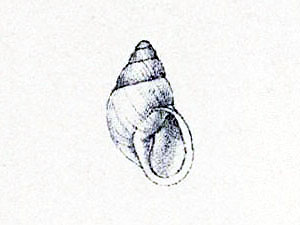Pilsbry’s Samoana Snail (Samoana pilsbryi)
Pilsbry’s Samoana Snail was described in 2016, it is known from several specimens that were collected in 1923 on the island of Fatu Hiva in the Marquesas.
The species lived an arboreal life and was usually found on the leaves of puarata (Metrosideros collina (J. R. Forst. & G. Forst.) A. Gray).
The shells are: “Light brown with some streaking, sometimes a faint narrow brown peripheral band, usually with a white subsutural band caused by decortications. A few bicolorous: light brown with wide supraperipheral white band but this is due to decortication, not pigmentation. A very uniform species.” [1]
We also have some information about the appearance of the animals themselves.:
“Mantle in juveniles is blackish with white maculae, becoming white with black threads and finally fully white in adults ….” [1]
***
Pilsbry’s Samoana Snail is now considered extinct.
*********************
References:
[1] Justin Gerlach: Icons of Evolution: Pacific Island Tree-Snails of the Family Partulidae. Phelsuma Press 2016
*********************
edited: 04.06.2021

